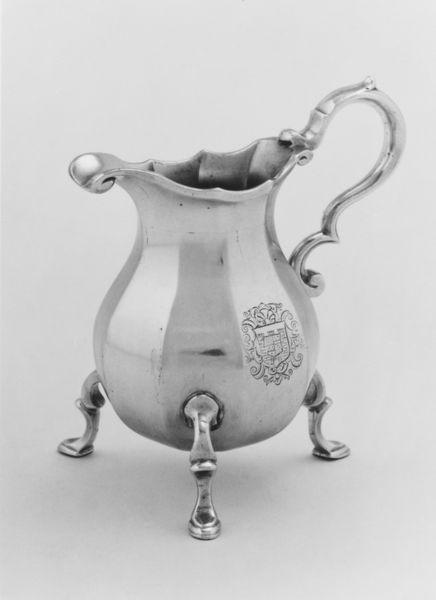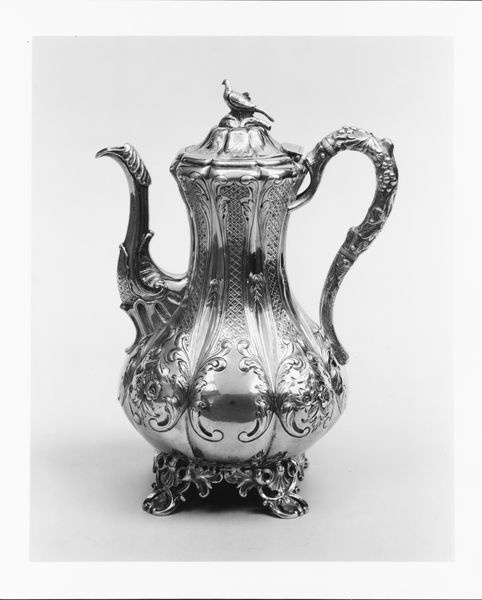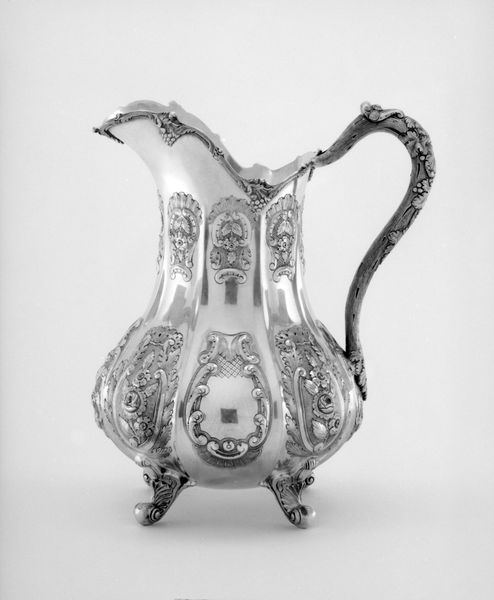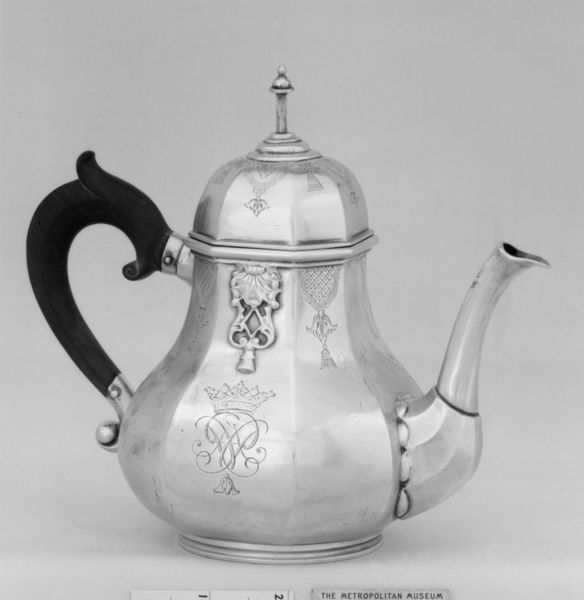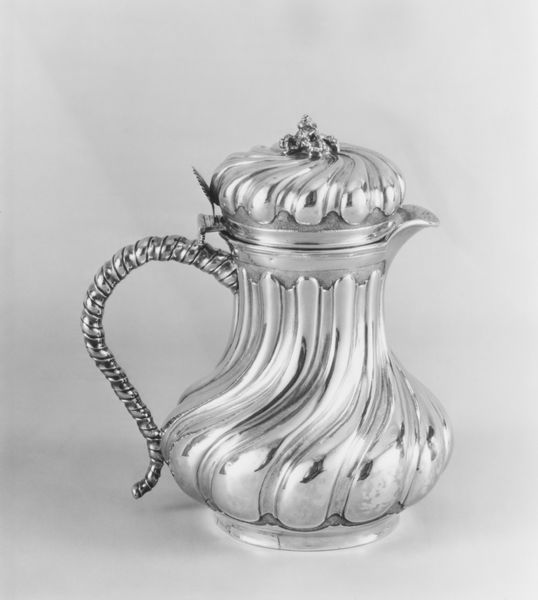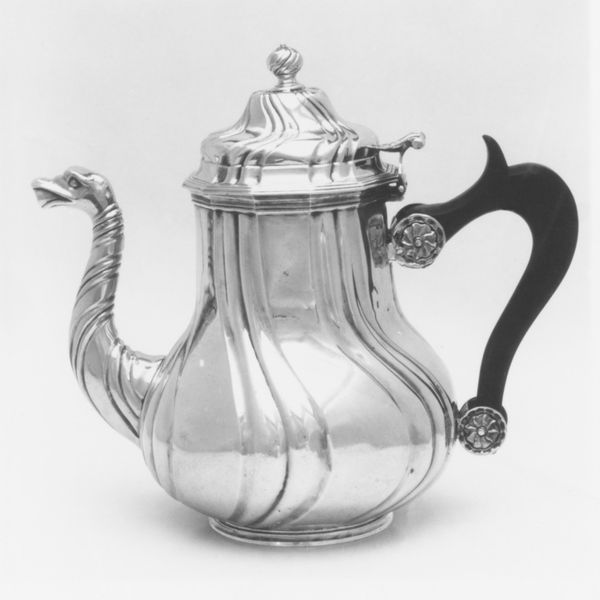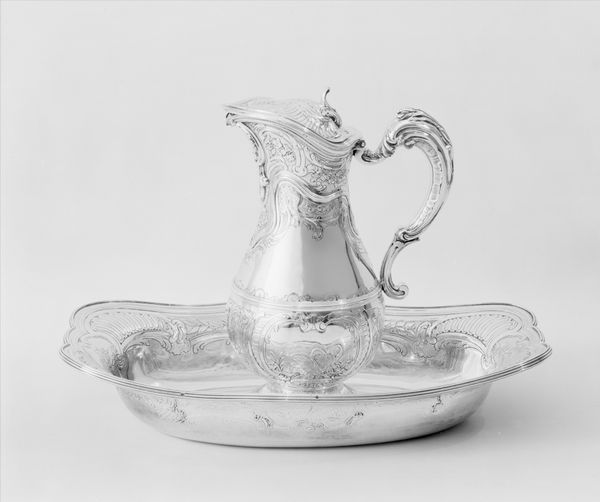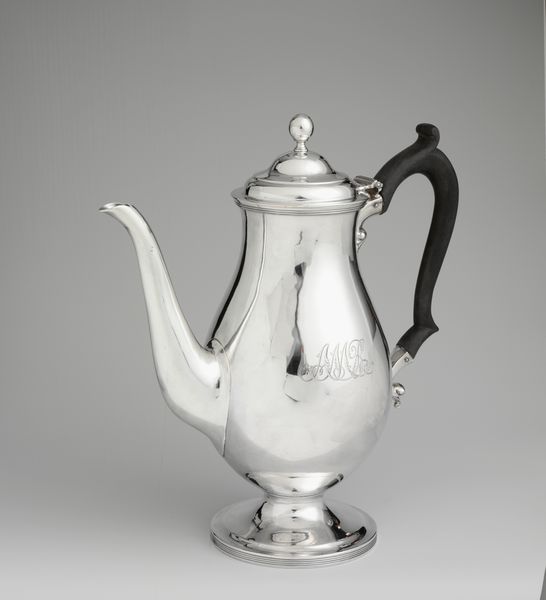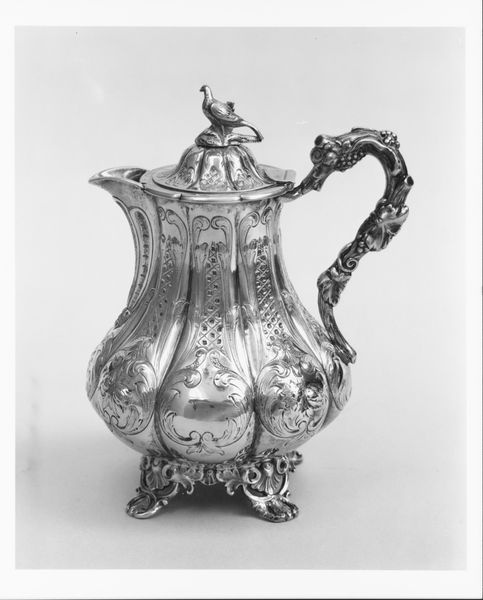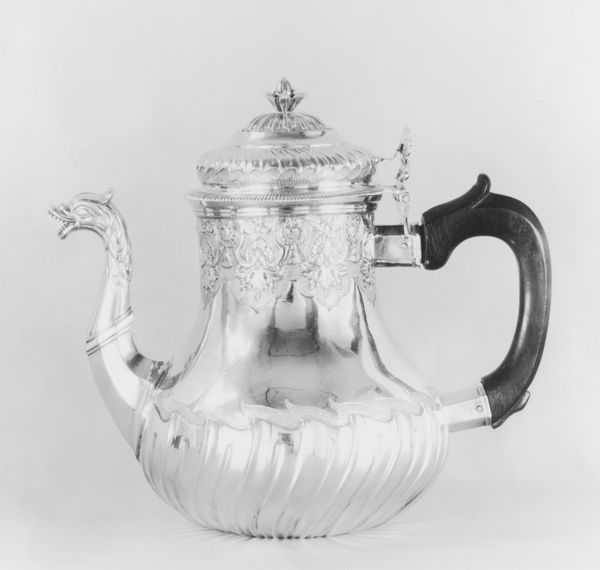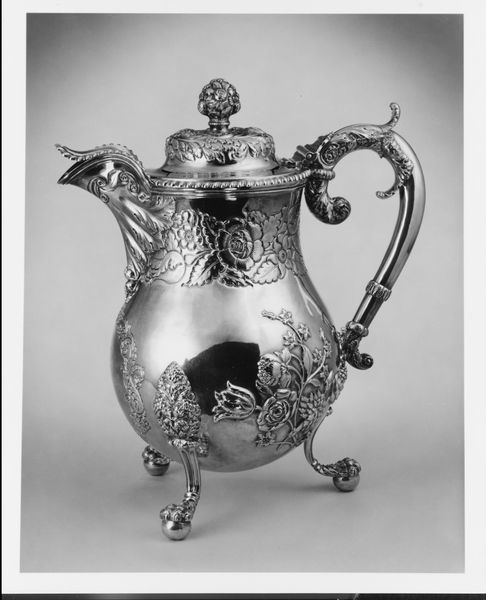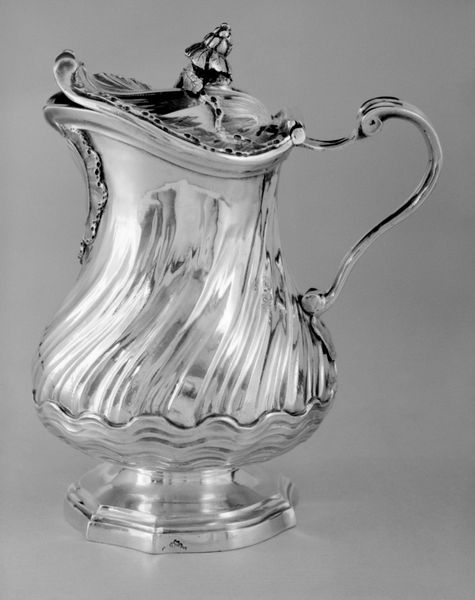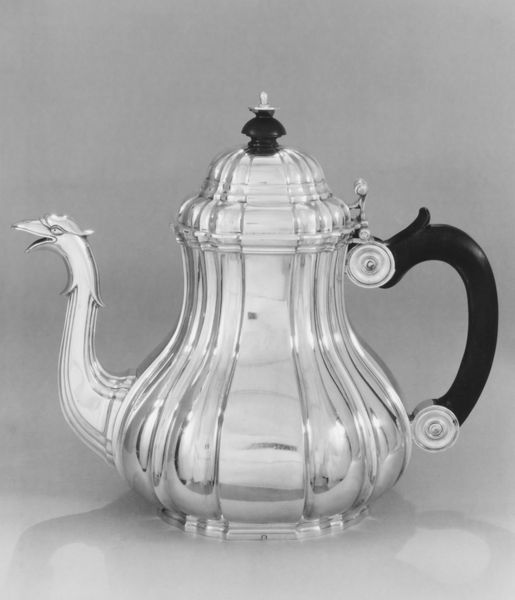
silver, sculpture
#
silver
#
sculpture
#
sculpture
#
decorative-art
Dimensions: Height: 7 5/16 in. (18.6 cm)
Copyright: Public Domain
Editor: So, this beautiful object is a silver Teapot, crafted sometime between 1730 and 1765. What strikes me is the contrast between the highly polished silver and the dark, almost brooding handle. What do you see in this piece that perhaps I'm missing? Curator: Ah, yes! This isn’t just about function, is it? It’s a stage for colonial theatre. Look closely – a Black figure forms the handle. That dog spout, representing vigilance and, likely, ownership. The contrast, you picked up on, isn't accidental. Silver’s light reflects societal status, whilst the darkened wood evokes those in its shadows. A silent serving class…quite literally carrying the weight. Editor: That's a very… pointed interpretation. I hadn’t really considered that historical reading, more drawn to the purely aesthetic elements like the shell decorations and fluted body. The handle seemed like… a design choice? Curator: My dear, even 'design choices' carry whispers. Consider where this teapot might have sat – within drawing rooms discussing trade, land, and the individuals shaping this global exchange. Imagine a conversation over tea grown and harvested far away, served in such an elaborate setting. Would we consider those serving tea, though unseen, shaping history as much? Editor: I suppose I was being naive. This teapot seems to contain a whole world within its polished surface – the world of trade, class and power dynamics. It is… unnerving, isn’t it? Curator: Art, in its most potent form, invites this unease, urging us to question stories presented so exquisitely. Are we looking through a clear lens, or one etched with uncomfortable realities? Food for thought with your next cup!
Comments
No comments
Be the first to comment and join the conversation on the ultimate creative platform.
